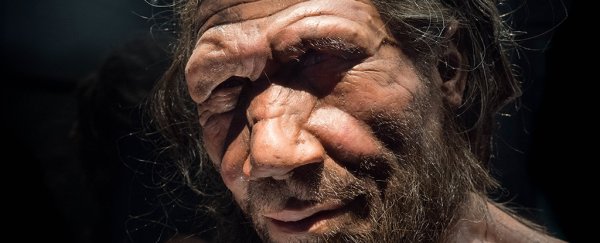Deep inside our DNA lurks a legacy of lust and romance between estranged human bloodlines reconnecting on an epic journey around the globe. It now seems we might have been misreading key details in this erotic tale.
A new method for analysing our genomes for traces of Neanderthal genes has revealed modern African populations – long assumed to be Neanderthal-free – also have a mixed heritage after all.
"This is the first time we can detect the actual signal of Neanderthal ancestry in Africans," says geneticist Lu Chen from Princeton University in the US.
"And it surprisingly showed a higher level than we previously thought."
The finding has implications for how we interpret previous studies on the spread of genes that entered our family tree while we were still migrating across the Asian continent.
Initial findings on Neanderthal DNA in modern Asian, European, and American populations determined that on average around 2 percent of our genome evolved in a population of Neanderthals.
Since then a multitude of studies have found that tiny fraction carries big responsibilities. Not only do those genes potentially affect a handful of physiological traits we can see, but they also seem to have beefed up our immune system to handle more pathogens.
We've also found that percentage varies significantly around the world. Having Asian ancestry means you probably have 20 percent more Neanderthal DNA than if you descended from European stock, for example.
But those from an African background were thought to have missed out on the product of that ancient affair, with researchers previously failing to find any trace of the Neanderthal sequences in modern African populations.
Without knowing exactly what a full Neanderthal genome would look like, or how much of it is in our own bodies, researchers traditionally relied on statistical methods that compare various DNA sequences against a reference point. By assuming our modern genetic heritage flowed with a migrating human population, from west to east, ancestors who remained in Africa established a blank slate as far as Neanderthal genes went.
Using the results of those studies only verified those assumptions further.
With advances in Neanderthal DNA analysis in mind, Chen and her colleagues took a different approach based on what's known as identity by descent (IBD).
Rather than rely on assumed reference points to make comparisons, the team went straight to the Neanderthal's sequenced genome and applied the principle that close family relationships are more likely to have more genetic sequences in common.
You and your siblings will share, on average, about half of your DNA. That statistic drops by a predictable figure when you compare your genes with your grandparents'.
Go back half a million years to a time when Neanderthals and modern humans shared family members, and we can come up with a fraction of our DNA we might expect to share simply because we're related.
Applying this approach to 2,504 modern genomes from the 1000 Genomes Project, researchers found there are indeed stretches of DNA buried in African genomes that came from Neanderthals living on the Asian continent long after we all went our separate ways.
More precisely, about 0.3 percent of the average African's genome was once shared by a Neanderthal. All but a small fraction of that DNA can also be found in non-African populations, suggesting those genes weren't picked up during separate interbreeding events.
We can only imagine descendants of historic Neanderthal admixing returning west over the past 20,000 years, bringing their shiny new genes into Africa with them as they retraced their family's footsteps into the sunset. It's not just a neat idea; it's a scenario backed up by simulations based on the figures.
What's more, some of that Neanderthal DNA itself contained clear signs of genes inherited from recent human migrants, presenting researchers with hints of a complex game of genetic pass-the-parcel.
Pressing reset on an important reference point for determining our respective quantities of Neanderthal genetics means we need to rethink earlier conclusions.
Where previous research claims East Asians have 20 percent more Neanderthal DNA than Europeans, taking these new numbers into account means that figure could actually be as low as just 8 percent.
University of Washington population geneticist Kelley Harris wasn't involved in the study, but thinks the results should force other researchers to recalculate their numbers.
"We might have to go back and revisit a bunch of results from the published literature and evaluate whether the same technical issue has been throwing off our understanding of gene flow in other species," says Harris.
Adding more Neanderthal genomes to form a better reference library could improve the method's accuracy, while using the same approach with Denisovan genomes could also reveal a complex weave of human relationships through time and across the globe.
This research was published in Cell.
